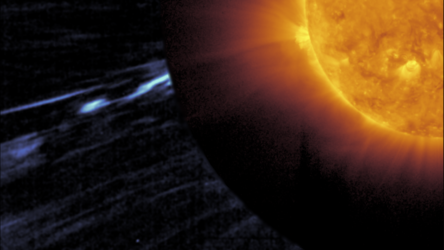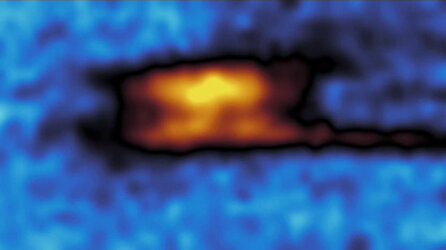Accept all cookies Accept only essential cookies See our Cookie Notice

About ESA
The European Space Agency (ESA) is Europe’s gateway to space. Its mission is to shape the development of Europe’s space capability and ensure that investment in space continues to deliver benefits to the citizens of Europe and the world.
Highlights
ESA - United space in Europe
This is ESA ESA facts Member States & Cooperating States Funding Director General Top management For Member State Delegations European vision European Space Policy ESA & EU Space Councils Responsibility & Sustainability Annual Report Calendar of meetings Corporate newsEstablishments & sites
ESA Headquarters ESA ESTEC ESA ESOC ESA ESRIN ESA EAC ESA ESAC Europe's Spaceport ESA ESEC ESA ECSAT Brussels Office Washington OfficeWorking with ESA
Business with ESA ESA Commercialisation Gateway Law at ESA Careers Cyber resilience at ESA IT at ESA Newsroom Partnerships Merchandising Licence Education Open Space Innovation Platform Integrity and Reporting Administrative Tribunal Health and SafetyMore about ESA
History ESA Historical Archives Exhibitions Publications Art & Culture ESA Merchandise Kids Diversity ESA Brand Centre ESA ChampionsLatest
Space in Member States
Find out more about space activities in our 23 Member States, and understand how ESA works together with their national agencies, institutions and organisations.
Science & Exploration
Exploring our Solar System and unlocking the secrets of the Universe
Go to topicAstronauts
Missions
Juice Euclid Webb Solar Orbiter BepiColombo Gaia ExoMars Cheops Exoplanet missions More missionsActivities
International Space Station Orion service module Gateway Concordia Caves & Pangaea BenefitsLatest
Space Safety
Protecting life and infrastructure on Earth and in orbit
Go to topicAsteroids
Asteroids and Planetary Defence Asteroid danger explained Flyeye telescope: asteroid detection Hera mission: asteroid deflection Near-Earth Object Coordination CentreSpace junk
About space debris Space debris by the numbers Space Environment Report In space refuelling, refurbishing and removingSafety from space
Clean Space ecodesign Zero Debris Technologies Space for Earth Supporting Sustainable DevelopmentLatest
Applications
Using space to benefit citizens and meet future challenges on Earth
Go to topicObserving the Earth
Observing the Earth Future EO Copernicus Meteorology Space for our climate Satellite missionsCommercialisation
ESA Commercialisation Gateway Open Space Innovation Platform Business Incubation ESA Space SolutionsLatest
Enabling & Support
Making space accessible and developing the technologies for the future
Go to topicBuilding missions
Space Engineering and Technology Test centre Laboratories Concurrent Design Facility Preparing for the future Shaping the Future Discovery and Preparation Advanced Concepts TeamSpace transportation
Space Transportation Ariane Vega Space Rider Future space transportation Boost! Europe's Spaceport Launches from Europe's Spaceport from 2012Latest

Metis observes the Sun’s corona
Thank you for liking
You have already liked this page, you can only like it once!
The outer atmosphere of the Sun, known as the corona, can be seen stretching off into space in this image from Solar Orbiter’s Metis instrument. Metis is a multi-wavelength device, working at visible and ultraviolet wavelengths. It is a coronagraph, which means that it blocks out the bright sunlight of the solar surface, leaving the fainter light that scatters off the particles in the corona visible. In this image, the fuzzy red disc represents the coronagraph while the white disc is a mask to compress the image size to reduce the amount of unnecessary data downlinked.
There is an enduring mystery surrounding the corona: its temperature. Composed of a magnetised gas called a plasma, the corona has a temperature of around a million degrees Celsius but it cannot be heated from the much cooler solar surface. Solar physicists have long suspected that turbulence must be involved but gathering the necessary measurements to investigate this hypothesis has been difficult. Recently an opportunity became available.
On 1 June 2022, the ESA-led Solar Orbiter spacecraft was turned slightly and rolled to one side, so that Metis could see the part of the corona through which NASA’s Parker Solar Probe was flying. This manoeuvre meant that for the first time, solar physicists recorded both the in-situ behaviour of the plasma in the solar corona, and the large-scale consequences. This enabled them to make the first combined estimate of the coronal heating rate. The results provide strong evidence that turbulence in the magnetised plasma is indeed causing the extraordinary heating.
-
CREDIT
ESA & NASA/Solar Orbiter/Metis team; D. Telloni et al (2023) -
LICENCE
ESA Standard Licence

How spacecraft gymnastics enabled joint Sun observations

Turbulence in the Sun’s corona

Zooming in on a solar switchback

Switchback in action















 Germany
Germany
 Austria
Austria
 Belgium
Belgium
 Denmark
Denmark
 Spain
Spain
 Estonia
Estonia
 Finland
Finland
 France
France
 Greece
Greece
 Hungary
Hungary
 Ireland
Ireland
 Italy
Italy
 Luxembourg
Luxembourg
 Norway
Norway
 The Netherlands
The Netherlands
 Poland
Poland
 Portugal
Portugal
 Czechia
Czechia
 Romania
Romania
 United Kingdom
United Kingdom
 Slovenia
Slovenia
 Sweden
Sweden
 Switzerland
Switzerland

























